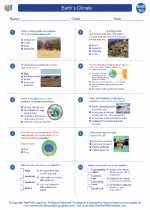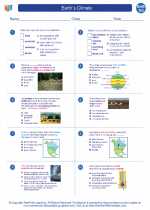Reproduction
Reproduction is the biological process by which new individuals of the same species are produced, ensuring the continuation of life. There are two main types of reproduction: asexual and sexual reproduction.
Asexual Reproduction
In asexual reproduction, a single parent organism produces offspring that are genetically identical to the parent. This process does not involve the fusion of gametes (sex cells) and is common in many single-celled organisms and some multicellular organisms. Asexual reproduction methods include binary fission, budding, and fragmentation.
Sexual Reproduction
Sexual reproduction involves the fusion of specialized sex cells called gametes from two different parents to produce offspring. The male gamete (sperm) fertilizes the female gamete (egg) to form a zygote, which then develops into a new individual. Sexual reproduction leads to genetic diversity and variation among offspring.
Types of Sexual Reproduction
- Oviparous: Organisms that lay eggs, which hatch outside the parent's body.
- Viviparous: Organisms that give birth to live young after the embryo has developed inside the parent's body.
- Ovoviviparous: Organisms that produce eggs that hatch within the parent's body, and the offspring are born live.
Human Reproduction
In humans, sexual reproduction involves the union of a sperm and an egg through sexual intercourse. The fertilized egg implants in the uterus, where it develops into an embryo and eventually a fetus. The baby is then born after a gestation period of around nine months.
Study Guide
When studying reproduction, it's important to understand the differences between asexual and sexual reproduction, as well as the various methods of reproduction in different organisms. Additionally, understanding the processes of fertilization, embryonic development, and birth in humans is essential for a comprehensive understanding of the topic.
Key concepts to focus on include the roles of gametes, the advantages and disadvantages of asexual and sexual reproduction, and the significance of genetic variation in offspring. Be sure to review the specific reproductive strategies of different organisms and their adaptations for successful reproduction in various environments.
Finally, consider the ethical and social implications of reproductive technologies and advancements, as well as the impact of human activities on reproductive processes in the natural world.
Remember to use diagrams and visual aids to reinforce your understanding of the different reproductive processes and their outcomes.
.◂Earth Science Worksheets and Study Guides High School. Earth`s Climate

 Worksheet/Answer key
Worksheet/Answer key
 Worksheet/Answer key
Worksheet/Answer key
 Vocabulary/Answer key
Vocabulary/Answer key
 Vocabulary/Answer key
Vocabulary/Answer key
 Vocabulary/Answer key
Vocabulary/Answer key
